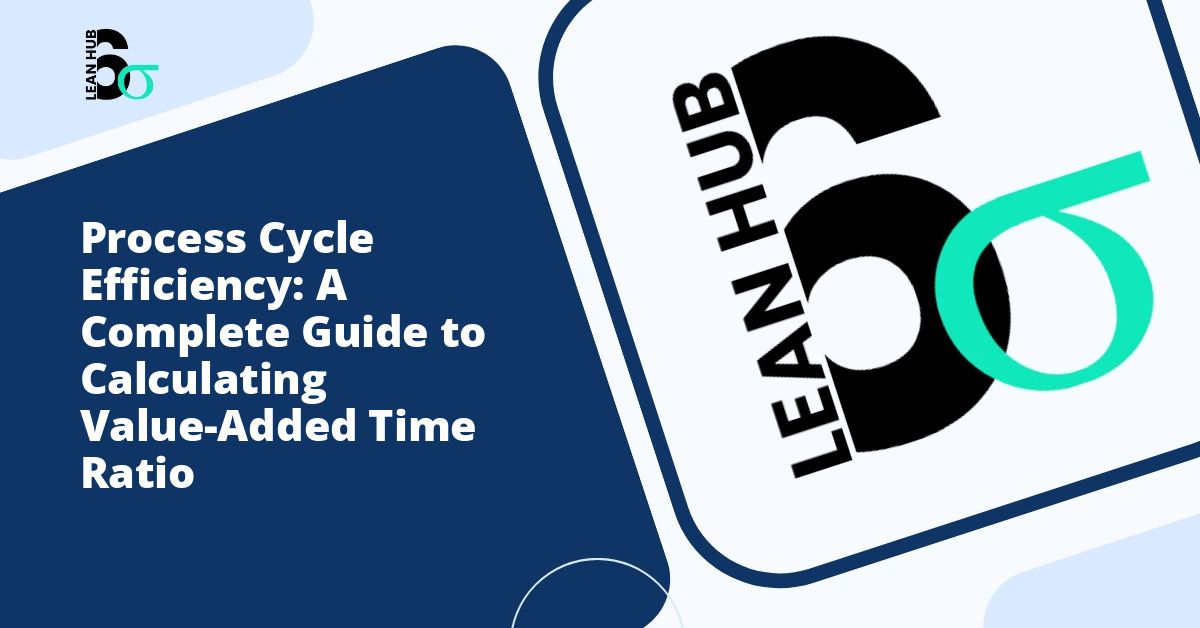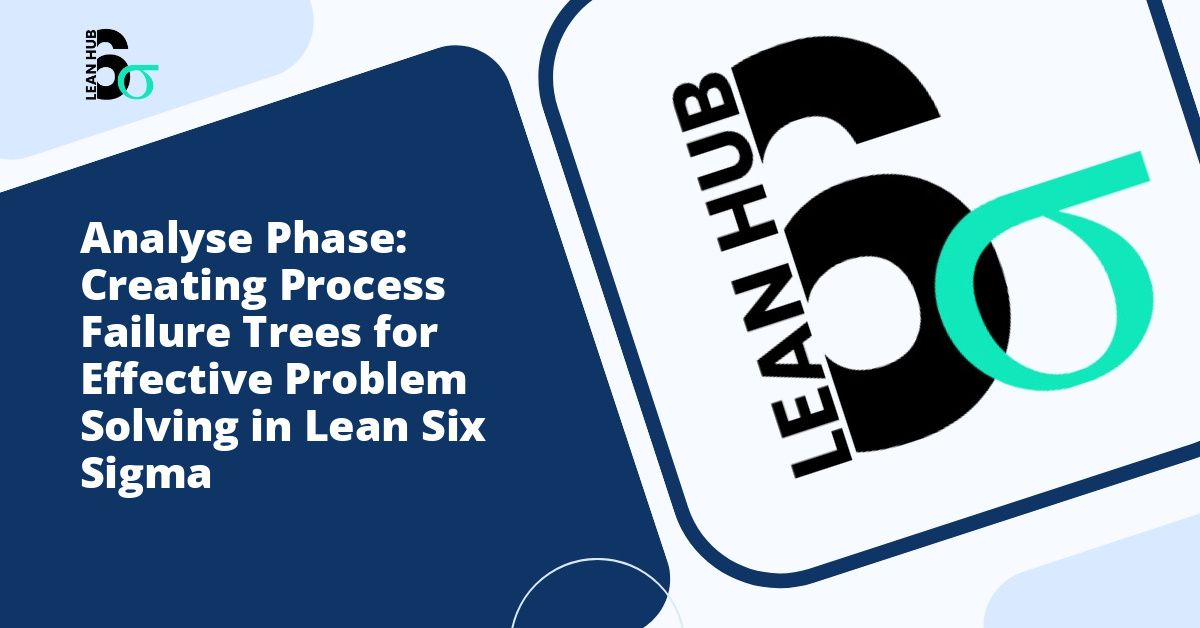In today’s competitive business environment, organizations constantly seek ways to improve operational efficiency and eliminate waste. One of the most powerful metrics for assessing process performance is Process Cycle Efficiency (PCE), also known as the value-added time ratio. This metric provides invaluable insights into how much of your total process time actually creates value for customers.
Understanding and optimizing Process Cycle Efficiency has become a cornerstone of modern improvement methodologies, particularly within lean six sigma frameworks. This comprehensive guide will walk you through the fundamentals of PCE, how to calculate it, and strategies to improve your value-added time ratio. You might also enjoy reading about ANOVA Explained: Comparing Multiple Groups in Your Process Analysis.
What Is Process Cycle Efficiency?
Process Cycle Efficiency is a metric that compares the time spent on value-added activities to the total time required to complete a process from start to finish. The result is expressed as a percentage that reveals how efficiently your process operates. You might also enjoy reading about Hypothesis Testing in Six Sigma: A Simple Guide for Non-Statisticians.
In simple terms, PCE answers a critical question: What percentage of the total process time actually contributes value from the customer’s perspective? The remaining time represents waste that organizations should target for elimination or reduction. You might also enjoy reading about 8 Types of Waste in Lean Six Sigma: How to Identify Each in the Analyze Phase.
The formula for Process Cycle Efficiency is straightforward:
PCE = (Value-Added Time / Total Lead Time) × 100
Where value-added time includes only those activities that transform the product or service in ways that customers are willing to pay for, and total lead time encompasses all time from process initiation to completion, including delays, waiting, transportation, and non-value-added activities.
Understanding Value-Added vs. Non-Value-Added Time
To accurately calculate PCE, you must first distinguish between value-added and non-value-added activities. This distinction forms the foundation of lean thinking and process improvement initiatives.
Value-Added Activities
Value-added activities meet three specific criteria. First, the customer must be willing to pay for the activity. Second, the activity must transform the product or service in some way. Third, the activity must be done correctly the first time. Activities that fail to meet all three criteria are considered non-value-added.
Examples of value-added activities include:
- Manufacturing operations that physically change or assemble products
- Medical procedures that diagnose or treat patients
- Software development tasks that create functional features
- Food preparation in restaurants
- Design work that creates customer specifications
Non-Value-Added Activities
Non-value-added activities consume time and resources without contributing to customer value. These activities fall into two categories: necessary non-value-added and pure waste.
Necessary non-value-added activities might include regulatory compliance tasks, quality inspections, or approval processes that customers do not directly value but that are currently required for business operations. While these should be minimized, they cannot be eliminated entirely under current conditions.
Pure waste includes activities such as:
- Waiting for information, materials, or approvals
- Unnecessary transportation or material movement
- Excess inventory storage
- Rework due to errors or defects
- Overprocessing beyond customer requirements
- Searching for tools, documents, or information
The Recognize Phase in Process Improvement
Before you can improve Process Cycle Efficiency, you must first recognize where inefficiencies exist. The recognize phase serves as the critical starting point for any process improvement initiative. This phase involves identifying current processes, documenting workflows, and establishing baseline measurements.
During the recognize phase, teams perform several essential activities. They map current state processes to visualize all steps and handoffs. They collect data on cycle times, wait times, and activity durations. They engage with process participants to understand pain points and bottlenecks. Most importantly, they categorize each activity as value-added or non-value-added.
This recognition work aligns closely with the Define and Measure phases of lean six sigma methodologies, where practitioners establish project scope, identify key metrics, and gather baseline data. Without thorough recognition of current state performance, improvement efforts lack direction and measurable goals.
How to Calculate Process Cycle Efficiency
Calculating PCE requires systematic data collection and analysis. Follow these steps to determine your process cycle efficiency accurately.
Step 1: Map the Complete Process
Create a detailed process map that documents every step from beginning to end. Include all activities, decision points, handoffs, and waiting periods. Engage people who actually perform the work to ensure accuracy and completeness.
Step 2: Measure Activity Durations
Record the time required for each activity in your process map. This measurement should include actual working time, not just estimates. For processes with high variability, collect data from multiple cycles to calculate average durations.
Step 3: Categorize Each Activity
Review each activity and classify it as value-added or non-value-added using the three criteria mentioned earlier. Be honest in this assessment, as customers define value, not internal preferences or traditions.
Step 4: Calculate Total Times
Sum all value-added activity times to get your total value-added time. Then sum all activity times, including waiting, delays, and non-value-added work, to determine total lead time.
Step 5: Apply the Formula
Divide value-added time by total lead time and multiply by 100 to get your PCE percentage. For example, if a process has 45 minutes of value-added time but takes 8 hours (480 minutes) to complete, the PCE would be (45/480) × 100, equaling 9.4%.
What Is a Good Process Cycle Efficiency?
Many organizations are shocked to discover that their Process Cycle Efficiency typically ranges from just 5% to 10%. This means that 90% to 95% of process time creates no customer value. Even well-managed processes in traditional organizations rarely exceed 20% efficiency.
World-class organizations using lean six sigma principles can achieve PCE rates of 25% or higher. Manufacturing processes with continuous flow can reach 50% or more. However, context matters significantly. Service processes with unavoidable waiting periods or regulatory requirements may have inherently lower PCE targets than production processes.
Rather than comparing yourself to arbitrary benchmarks, focus on continuous improvement. Establish your baseline PCE, set realistic improvement targets, and track progress over time.
Strategies to Improve Process Cycle Efficiency
Once you recognize your current PCE and identify improvement opportunities, implement these proven strategies.
Eliminate Pure Waste
Target activities that provide no value and are not required. Question every non-value-added step: Why does this exist? Can we eliminate it entirely? This approach delivers the fastest improvements with minimal risk.
Reduce Waiting Time
Waiting often represents the largest component of non-value-added time. Address bottlenecks, balance workloads, improve communication, and create better scheduling systems to minimize delays.
Streamline Handoffs
Every time work passes from one person or department to another, opportunities for delay and error increase. Reduce handoffs by cross-training employees, co-locating teams, or redesigning workflows.
Implement Pull Systems
Rather than pushing work through processes regardless of downstream capacity, create pull systems where work advances only when the next step is ready. This approach reduces waiting and inventory.
Standardize Processes
Variation increases waste. Develop standard work procedures that document the most efficient methods, reducing variability and improving consistency.
Automate Repetitive Tasks
Technology can eliminate non-value-added manual tasks such as data entry, status updates, or routine approvals, freeing employees to focus on value-added activities.
Monitoring and Sustaining Improvements
Calculating Process Cycle Efficiency is not a one-time exercise. Organizations committed to operational excellence monitor PCE regularly, establishing it as a key performance indicator alongside quality, cost, and delivery metrics.
Create visual management systems that display current PCE performance. Conduct regular process reviews to identify new improvement opportunities. Celebrate successes when teams achieve PCE targets. Most importantly, embed continuous improvement thinking into organizational culture so that waste elimination becomes everyone’s responsibility.
Conclusion
Process Cycle Efficiency provides a powerful lens for viewing organizational performance. By calculating the value-added time ratio, you gain clear visibility into how much of your process time truly serves customers and where opportunities for improvement exist.
The journey begins when you recognize current state performance, honestly assess which activities create value, and commit to systematic waste elimination. Whether you are implementing lean six sigma methodologies or simply seeking operational improvements, PCE serves as both a diagnostic tool and a measure of progress.
Start by selecting a critical process in your organization. Map the workflow, measure the times, calculate your baseline PCE, and begin the improvement journey. The results will speak for themselves through faster delivery, lower costs, and increased customer satisfaction.








